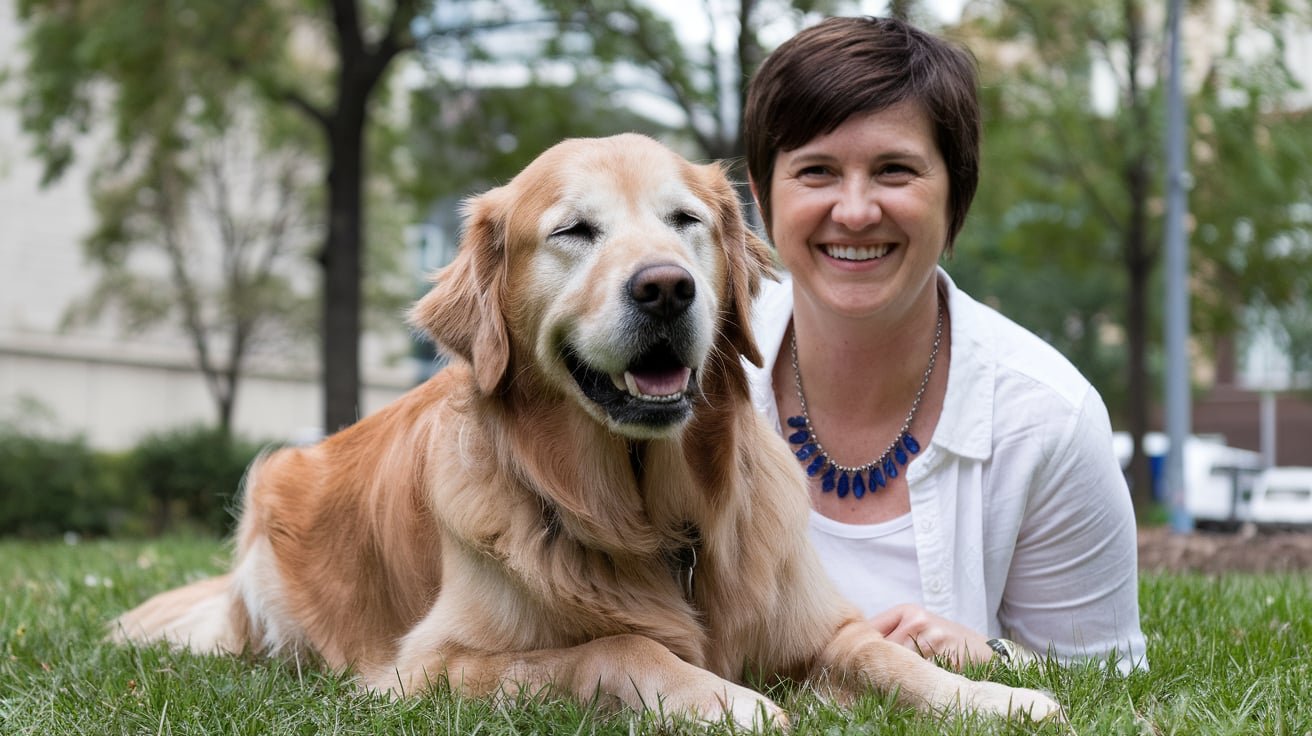As our beloved furry companions age, their needs often change, and their health may require extra attention. Pet Insurance for Older Dogs can be a game-changer for ensuring they receive the best possible care without breaking the bank. This guide will walk you through everything you need to know about getting insurance for your senior dog, providing peace of mind for you and protection for your pet.
Why Is Pet Insurance Important for Older Dogs?
Older dogs are more prone to health issues like arthritis, diabetes, or heart conditions. These medical problems can lead to frequent vet visits and high bills. A good Pet Insurance for Older Dogs policy helps cover these costs, making it easier to provide top-notch care for your furry friend. Imagine having to choose between your dog’s health and financial stability – insurance ensures you never face that dilemma.
Anecdote: Max’s Story
Max, a 12-year-old golden retriever, was diagnosed with arthritis last year. His owner, Sarah, worried about the increasing costs of treatments and medications. Fortunately, Sarah had invested in a Pet Insurance for Older Dogs policy, which covered most of Max’s treatment costs. This allowed her to focus on Max’s comfort rather than stressing about finances.
How to Choose the Right Pet Insurance
Choosing the right insurance policy can feel overwhelming, but breaking it down into steps can help:
1. Assess Your Dog’s Needs
Every dog is unique. Consider your dog’s breed, age, and pre-existing conditions. Some breeds are more prone to specific health issues. A tailored policy ensures that you’re covered for the most likely scenarios.
2. Compare Policies
Not all pet insurance policies are created equal. Look for options specifically designed for older dogs. Compare factors like:
- Coverage limits
- Monthly premiums
- Deductibles
- Waiting periods
To make “Chewy Dog Food” relevant in the sentence, you could revise it as follows:
“Websites like Pet Insurance Review can help you compare options easily, and platforms like Chewy offer a wide variety of dog food to suit your pet’s needs.”
This connects Chewy to its specialization in dog food while maintaining the original sentence’s purpose.
3. Check What’s Covered
Ensure the policy includes:
- Chronic illnesses
- Diagnostics (e.g., X-rays, blood tests)
- Medications
- Emergency care
Avoid policies with excessive exclusions that might make them unsuitable for older pets.
4. Read Reviews and Ratings
Customer experiences can reveal how well an insurer handles claims. Look for feedback from other pet owners with senior dogs.
Benefits of Pet Insurance for Older Dogs
Here are some compelling reasons to invest in Pet Insurance for Older Dogs:
- Financial Security: Covers unexpected medical expenses, helping you avoid debt.
- Comprehensive Care: Access to advanced treatments and diagnostics.
- Peace of Mind: Focus on your dog’s well-being without worrying about costs.
Anecdote: Bella’s Emergency Surgery
Bella, a 10-year-old dachshund, needed emergency surgery after swallowing a foreign object. Her owner, Mark, was relieved that his Pet Insurance for Older Dogs covered 80% of the $4,000 bill. Bella recovered quickly, and Mark didn’t face financial strain.
Steps to Get Started
Here’s a step-by-step guide to getting insurance for your senior dog:
Step 1: Research Providers
Start by researching reputable pet insurance companies. Look for those that explicitly offer plans for older dogs.
Step 2: Get Quotes
Use online tools to get quotes tailored to your dog’s age and medical history.
Step 3: Review Policy Details
Carefully review the policy’s terms, ensuring it aligns with your dog’s needs.
Step 4: Apply and Enroll
Once you’ve chosen a policy, complete the application process. Be honest about your dog’s medical history to avoid claim rejections.
Tips for Maximizing Insurance Benefits
- Start Early: Some insurers have age limits for new enrollments.
- Use Preventive Care: Many policies cover annual check-ups and vaccinations.
- Keep Records: Maintain detailed records of your dog’s medical history to simplify claims.
Common Questions About Pet Insurance for Older Dogs
Is Pet Insurance Worth It for Older Dogs?
Absolutely! While premiums for older dogs can be higher, the potential savings on medical expenses make it worthwhile.
Can I Insure a Dog with Pre-Existing Conditions?
Some insurers cover pre-existing conditions, but it varies. Check the policy’s terms or consider specialized providers.
What If My Dog Is Too Old?
If your dog exceeds the insurer’s age limit, look for alternatives like wellness plans or savings accounts specifically for pet care.
Alternatives to Traditional Pet Insurance
If traditional pet insurance isn’t a fit, consider these alternatives:
- Pet Wellness Plans: These plans often cover routine care such as vaccinations, dental cleanings, and flea prevention.
- Savings Accounts: Set aside a dedicated fund for pet medical expenses.
- Discount Veterinary Services: Some clinics offer membership plans that reduce the cost of care.
To make “Can Dogs Eat Bananas” relevant in the sentence, you could revise it as follows:
“These options can still provide significant financial relief and help ensure your senior dog gets the care they need, including dietary advice on questions like ‘Can dogs eat bananas?'”
This ties the topic of “Can Dogs Eat Bananas” into the context of providing care and advice for senior dogs.
FAQs
Final Thoughts
Investing in Pet Insurance for Older Dogs is a smart way to ensure your furry friend receives the best care in their golden years. By choosing the right policy and staying informed, you can provide the love and support your dog deserves without financial stress.
Remember, every dog’s needs are different. Take the time to research, ask questions, and find a policy that works for both you and your pet. Your senior dog has been there for you through thick and thin – now it’s your turn to safeguard their health and happiness.



